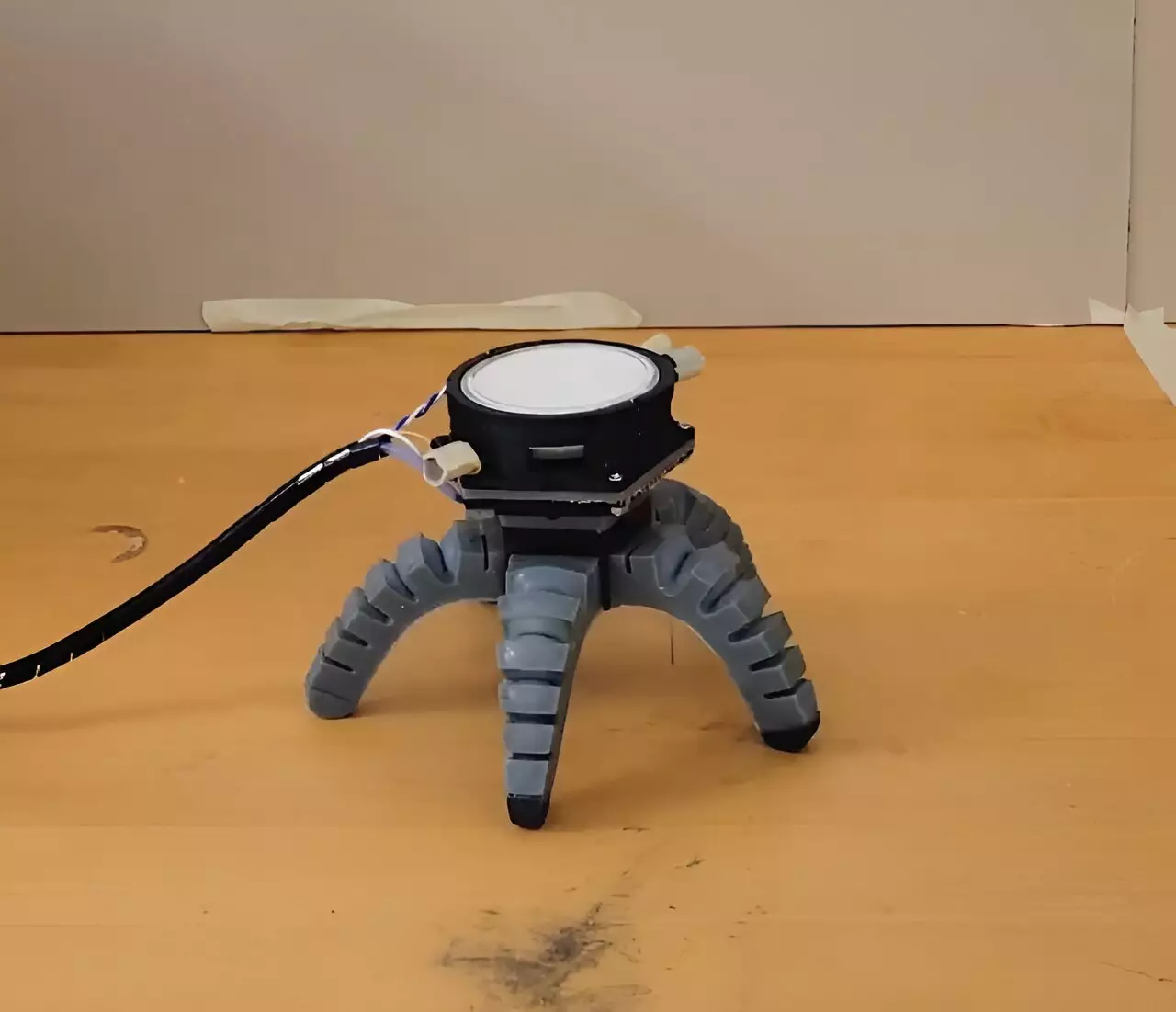The emerging field of robotics is experiencing rapid advancements, fueled by innovative materials and methodologies that push the boundaries of traditional engineering. At the forefront of this evolution is a recent groundbreaking effort by researchers at Cornell University, where an unusual biological component—fungal mycelia—is being integrated into robotic systems. This shift not only highlights the innovative capabilities of biohybrid robots but also sets the stage for potentially transformative applications in various fields, from agriculture to environmental monitoring.
The team, led by research associate Anand Mishra in collaboration with Professor Rob Shepherd, focuses on harnessing the unique properties of mycelia. These underground networks of fungi, often overlooked, are being recognized for their remarkable ability to sense environmental changes and produce electrical signals that can control robotic functionalities. The researchers’ findings, detailed in the paper titled “Sensorimotor Control of Robots Mediated by Electrophysiological Measurements of Fungal Mycelia,” showcase the profound implications of combining living organisms with synthetic constructs.
The choice of mycelium as a foundational element in robotic design is not arbitrary. Mycelia offer several advantages over traditional synthetic materials: they are resilient, adaptable, and capable of complex responses to stimuli such as light and chemicals. Mishra articulates this sentiment clearly: unlike standard sensors that operate on a singular input-output basis, living systems such as mycelia can react to multiple stimuli concurrently. This characteristic is instrumental in developing robots that can navigate unpredictable environments, enabling them to adapt and respond rapidly to unforeseen circumstances.
Consider the potential applications of this technology. Future robots incorporating mycelia could assist in precision agriculture by monitoring soil composition and health, ultimately decelerating detrimental effects such as nutrient runoff that leads to harmful algal blooms. Such capabilities could revolutionize sustainable agriculture, improving yields while protecting ecological systems.
Successfully merging mycelium with robotics requires a multidisciplinary approach. Mishra’s work embodies collaboration across various scientific fields, merging principles from mechanical engineering, mycology, neuroscience, and electronic signal processing. The challenges are significant, not least because cultivating clean mycelia cultures is an intricate process. The involvement of experts like Associate Professor Kathie Hodge, who specializes in plant pathology, was essential in developing methods to grow uncontaminated mycelium.
Innovations stem not just from technological expertise but the integration of knowledge across fields. The researchers utilized a specialized electrical interface to eliminate extraneous vibrations, thus allowing accurate analysis and recording of the mycelia’s physiological signals. This intricate design enables the mycelia’s electromagnetic activity to inform robotic actions, a feat not easily achieved in traditional robotic systems.
The Experimental Journey
In their experiments, the Cornell team constructed two distinct biohybrid robots—a soft, spider-like robot and a wheeled counterpart. These robots underwent three different experimental conditions to gauge their responsiveness to the mycelia signals. Initial trials demonstrated that the robots could walk or roll based on the continuous electrical spikes naturally emitted by the mycelia. The second stage entailed stimulating the mycelia with ultraviolet light, which prompted changes in robotic gait, showcasing the mycelia’s ability to react dynamically. Notably, the researchers could also override the mycelia’s base signal, venturing into a territory that marshals both machine learning and biological signaling.
These findings are emblematic of a new frontier not only in robotics but in our overarching relationship with living systems. As Mishra adeptly points out, understanding these biological signals extends beyond mere control of robotic functions; it creates a deeper connection to living ecosystems. The data gleaned from the mycelia’s responses can offer powerful insights into the environmental conditions they encounter, potentially revealing how various stresses impact both robot and organism.
Future Implications
The implications of this research are vast and hold promise for future iterations of biohybrid technology. As we look towards a landscape where robotics and biological systems converge, we are prompted to reevaluate our perspectives on technology and its role in ecological stewardship. The notion of robots as mere mechanical tools is evolving; they are comprising living organisms that communicate with the environment in profound and new ways.
This pioneering research at Cornell represents a significant step towards the fusion of biology and technology. By leveraging mycelia in robotic systems, we are not only advancing engineering capabilities but also paving the way for more responsive, adaptive technologies that respect and reflect the complexity of the natural world. As these innovations unfold, they could pave the path towards a more sustainable coexistence between technology and nature, enriching both realms.


Leave a Reply